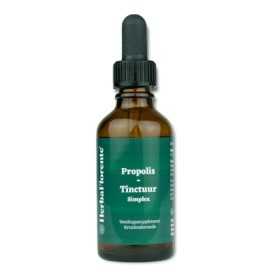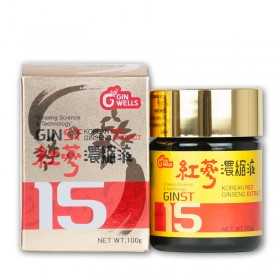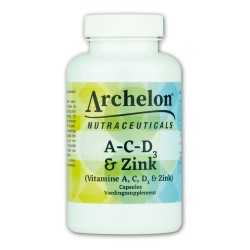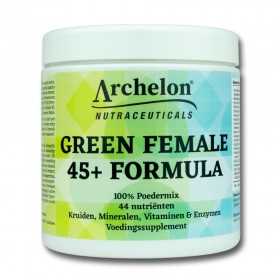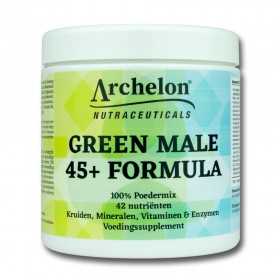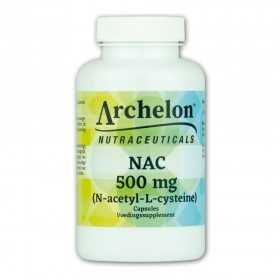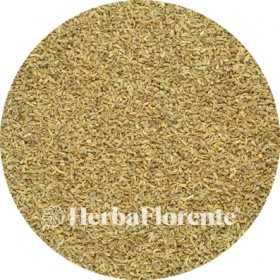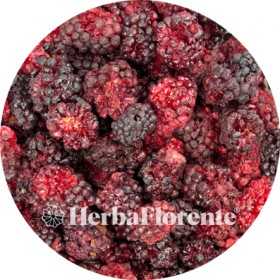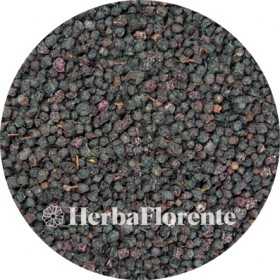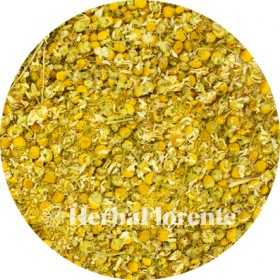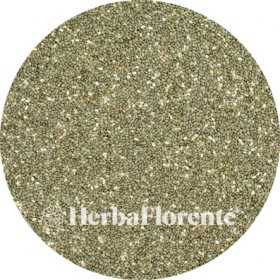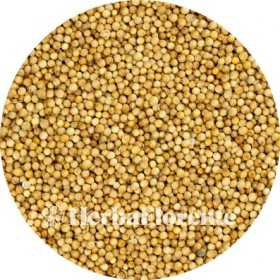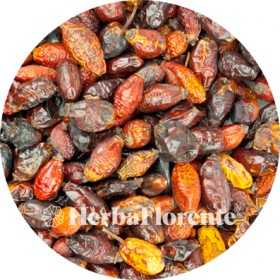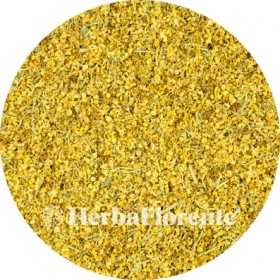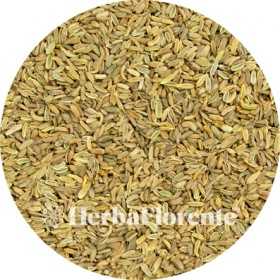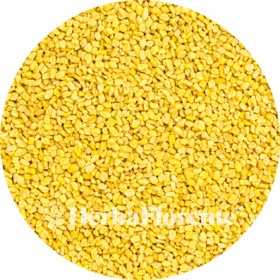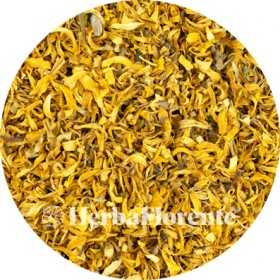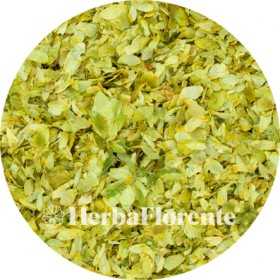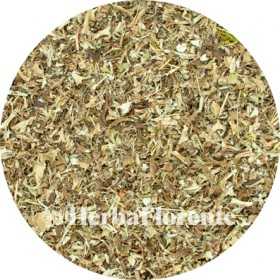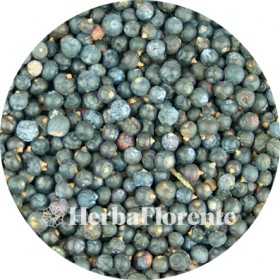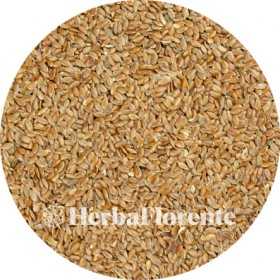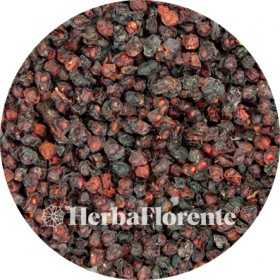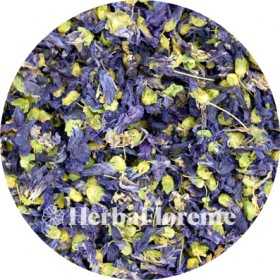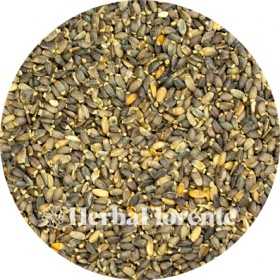Herbs Whole
There are 38 products.
Anise - Pimpinella anisum
Anise seed has a naturally sweet, warm taste reminiscent of licorice. It is a versatile seasoning that can be used in both sweet and savory dishes. All over the world, anise seed is used in confectionery, and it is also often added to liqueurs, such as Ouzo.
You can add anise seeds to bread, pastries, cookies, fruit and gingerbread. In Indian cuisine, anise is indispensable in curries and fish dishes, and it gives a delicious flavor to vegetables such as pumpkin and carrot. In the Netherlands it is a tradition to use anise seed on rusk with mice at birth.
Anise seed tea can help with a feeling of heaviness after meals, because it has a soothing and relaxing effect.
You can add anise seeds to bread, pastries, cookies, fruit and gingerbread. In Indian cuisine, anise is indispensable in curries and fish dishes, and it gives a delicious flavor to vegetables such as pumpkin and carrot. In the Netherlands it is a tradition to use anise seed on rusk with mice at birth.
Anise seed tea can help with a feeling of heaviness after meals, because it has a soothing and relaxing effect.
€2.95
From: €2.95
Aronia berry - Arnoia melanocarpa - Whole
Aronia berries, also called black chokeberries (Aronia melanocarpa), grow on compact bushes of about 1 to 3 meters high. The berries have a deep purple to black color.
Aronia berries are particularly rich in anthocyanins, the flavonoids that give the berries their characteristic color. Flavonoids are plant substances that protect the plant against ultraviolet light, oxidation and heat. Compared to blueberries, aronia berries contain four times more anthocyanins.
The black fruits contain different types of anthocyanins. The natural function of these anthocyanins and other polyphenols is to protect the seed of the aronia berry against harmful external influences. Anthocyanins act as natural antioxidants.
Aronia berries are particularly rich in anthocyanins, the flavonoids that give the berries their characteristic color. Flavonoids are plant substances that protect the plant against ultraviolet light, oxidation and heat. Compared to blueberries, aronia berries contain four times more anthocyanins.
The black fruits contain different types of anthocyanins. The natural function of these anthocyanins and other polyphenols is to protect the seed of the aronia berry against harmful external influences. Anthocyanins act as natural antioxidants.
€2.00
From: €2.00
Blackberry (Fruit) - Rubus fructicosus, Frucus Rubi
Blackberries are not only delicious, but also extremely nutritious. They are packed with essential nutrients and dietary fiber. These dark purple treats are a rich source of vitamins C, E, K, folic acid and manganese, making them an important contribution to a healthy diet.
The intense purple color of blackberries is caused by anthocyanins, powerful antioxidants that protect our cells against harmful external influences. But it goes further than that. Blackberries are particularly rich in phenolic acids, which also have antioxidant properties. These acids, which include anthocyanins, ellagic acid, rutin, gallic acid, quercetin, cyanides, p-coumaric acid and cinnamic acid, provide numerous health benefits.
The intense purple color of blackberries is caused by anthocyanins, powerful antioxidants that protect our cells against harmful external influences. But it goes further than that. Blackberries are particularly rich in phenolic acids, which also have antioxidant properties. These acids, which include anthocyanins, ellagic acid, rutin, gallic acid, quercetin, cyanides, p-coumaric acid and cinnamic acid, provide numerous health benefits.
€10.00
From: €10.00
Blue Berrie - Vaccinium mytrillus, Frucus myrtilli
The blueberry (Vaccinium myrtillus) is not only nutritious, but also extremely popular. These berries are extremely low in calories and are often labeled as a superfood. Although low in calories, blueberries are packed with beneficial nutrients, including antioxidants like flavonoids and anthocyanins.
Additionally, they contain a wide range of other compounds, including folic acid, vitamins A and C, carotenoids, ellagic acid and fiber. The specific anthocyanins in blueberries contribute to normal eye function and provide support to the heart and blood vessels.
Additionally, they contain a wide range of other compounds, including folic acid, vitamins A and C, carotenoids, ellagic acid and fiber. The specific anthocyanins in blueberries contribute to normal eye function and provide support to the heart and blood vessels.
€8.20
From: €8.20
Chamomile (Flower) - Matricaria recutita, Chamomillae europ. - Whole
True chamomile, also known as Matricaria chamomilla or Matricaria recutita, is native throughout Europe and widely cultivated in countries such as Hungary and Eastern Europe. The ancient Egyptians revered chamomile as the flower of the sun god Ra. The herb is known for its supportive effect on the immune system, soothing effect on the respiratory tract and promoting digestion. Additionally, chamomile is often used as a natural sedative and to promote restful sleep.
€2.95
From: €2.95
Chia seeds - Salviae Sem. Hispanica nigri albi
Chia, also known as Salvia hispanica, is a plant from the Lamiaceae family, originally from central and southern Mexico and Guatemala. The Aztecs cultivated this plant even before Columbus discovered America, and chia seeds were used as currency to the rulers. Today, chia is still prized in Mexico and Guatemala; the ground seeds are used in dishes, while whole seeds are often added to nutritious drinks.
The main purpose of growing chia is for its seeds, which are rich in omega-3 fatty acids. About 25-30% of the seed contains vegetable oil, including alpha-linolenic acid (ALA). Chia seeds are small and oval, about 1 mm in diameter, and have a color palette of brown, gray-black and white.
The main purpose of growing chia is for its seeds, which are rich in omega-3 fatty acids. About 25-30% of the seed contains vegetable oil, including alpha-linolenic acid (ALA). Chia seeds are small and oval, about 1 mm in diameter, and have a color palette of brown, gray-black and white.
€2.00
From: €2.00
Clove - Syzygium aromaticum - Whole
Clove (Syzygium aromaticum) is the dried, fragrant flower bud of the clove tree. The main active ingredient is eugenol, which also promotes the antioxidant properties of cloves. Clove is known for its antioxidant effect and supports healthy digestion. In addition, it improves blood circulation and soothes the throat.
€3.00
From: €3.00
Coriander - Coriandrum sativum - Whole
Coriander seeds have been used for thousands of years to support digestion and intestinal health, and this tradition continues to this day. People who want to strengthen their immune system prefer coriander seeds. In addition, coriander seed has a beneficial effect on the heart and nervous system.
Coriander is an herb rich in valuable substances. Both the leaves and seeds contain vitamins A, C, K and folic acid, as well as minerals such as iron, manganese, potassium, magnesium and calcium. The seeds are especially rich in essential oils such as linalool, camphor, gamma terpinene and geranyl acetate. The seeds are the main source of nutrients.
Coriander is an herb rich in valuable substances. Both the leaves and seeds contain vitamins A, C, K and folic acid, as well as minerals such as iron, manganese, potassium, magnesium and calcium. The seeds are especially rich in essential oils such as linalool, camphor, gamma terpinene and geranyl acetate. The seeds are the main source of nutrients.
€2.00
From: €2.00
Dill - Anethum graveolens
Dill seed has a refreshing, spicy flavor reminiscent of anise and fennel, and it is more powerful in flavor than dill tops. Whole dill seeds retain their aroma and flavor longer than ground dill seeds. Our dried dill seed is completely natural and free of additives.
Dill is an indispensable seasoning in the kitchen and is often used for preserving vegetables, salmon, mayonnaise and potato salad. It is also delicious in bread, stews, salads, soups, on fish, peas, beans, carrots, pumpkin, beets and potatoes.
Dill is an indispensable seasoning in the kitchen and is often used for preserving vegetables, salmon, mayonnaise and potato salad. It is also delicious in bread, stews, salads, soups, on fish, peas, beans, carrots, pumpkin, beets and potatoes.
€2.50
From: €2.50
Dogrose - Rosa canina
The dog rose (Rosa canina) is a native rose species in the Benelux, found in Europe, Northwest Africa and West Asia. This species has been introduced into North America.
It is a large, upright growing shrub that can reach a height of 1-4 meters, with long, arching branches that sometimes hang over. The leaves and branches without glands are green, sometimes with a reddish tinge.
The dog rose blooms from June to July with flowers 3.5 to 4.5 centimeters in size, usually pale pink but sometimes white, and they grow in groups of one to ten.
After flowering, a rose hip develops, a fleshy flower base with nutty fruits inside. The rose hip is oval or ovoid, red-orange in color, and measures 1-2.5 cm long and 1-1.8 cm wide.
It is a large, upright growing shrub that can reach a height of 1-4 meters, with long, arching branches that sometimes hang over. The leaves and branches without glands are green, sometimes with a reddish tinge.
The dog rose blooms from June to July with flowers 3.5 to 4.5 centimeters in size, usually pale pink but sometimes white, and they grow in groups of one to ten.
After flowering, a rose hip develops, a fleshy flower base with nutty fruits inside. The rose hip is oval or ovoid, red-orange in color, and measures 1-2.5 cm long and 1-1.8 cm wide.
€2.00
From: €2.00
Elder - Sambuci nigri
The elder (Sambucus nigra L.) is a native tree/shrub in the Netherlands that is widespread in various places in our country. Towards the end of May the elder tree blooms and produces large umbels of small, creamy white flowers that give off a sweet, floral scent. These blossoms are used to make elderflower liqueur, syrup or pancakes. In addition to their delicious taste, the blossoms are also rich in substances, including up to 3% flavonoids such as rutin, quercetin and astragalin. In addition, they contain tannins (tannins), triterpenes, fatty acids and essential oil.
€3.60
From: €3.60
Elder - Sambuci nigri
The elder (Sambucus nigra L.) is a versatile plant that grows both as a shrub and as a tree in many places in the Netherlands. Although the berries are mainly known for their health-promoting properties, the blossoms also contain valuable substances that can support the immune system and the respiratory tract.
The berries, which ripen towards the end of summer, are rich in natural vitamin C and are considered a powerful antioxidant. They are often used to support the immune system and respiratory system. In addition to flavonoids, the berries also contain anthocyanins, natural sugars and tannins, just like the blossoms.
The berries, which ripen towards the end of summer, are rich in natural vitamin C and are considered a powerful antioxidant. They are often used to support the immune system and respiratory system. In addition to flavonoids, the berries also contain anthocyanins, natural sugars and tannins, just like the blossoms.
€3.00
From: €3.00
Fennel - Foeniculum vulgare - Whole
Fennel (Foeniculum vulgare) is a plant belonging to the lacecap family (Apiaceae). It has a distinctive flavor reminiscent of anise, and both the threadlike branches of the leaves and the seeds are used as a herb and spice.
Originally from Asia and the Mediterranean, fennel was brought to Europe via medieval trade routes. Fennel is widely grown, especially in Southern Europe, and is an important ingredient in salads and other dishes.
Chewing fennel seeds can suppress the feeling of hunger. In the past, believers who went to church sober sometimes chewed fennel seeds during the church service.
Originally from Asia and the Mediterranean, fennel was brought to Europe via medieval trade routes. Fennel is widely grown, especially in Southern Europe, and is an important ingredient in salads and other dishes.
Chewing fennel seeds can suppress the feeling of hunger. In the past, believers who went to church sober sometimes chewed fennel seeds during the church service.
€2.00
From: €2.00
Fenugreek - Foenugraeci graecum - Whole
Fenugreek (Trigonella foenum-graecum), also known as fenugreek, boxhorn trefoil or Greek hay, is known for its various health benefits. It can help stimulate appetite, support the immune system and promote fat metabolism.
This versatile plant is mainly used as a spice in Indian cuisine. The aromatic leaves of fenugreek are also used to mask the bitter taste of medicines. Originally from the Mediterranean region, fenugreek later gained popularity in Asia.
Fenugreek is rich in essential minerals such as iron and copper. In addition, it contains saponins and coumarins, where coumarins are known for their pleasant hay-like scent.
This versatile plant is mainly used as a spice in Indian cuisine. The aromatic leaves of fenugreek are also used to mask the bitter taste of medicines. Originally from the Mediterranean region, fenugreek later gained popularity in Asia.
Fenugreek is rich in essential minerals such as iron and copper. In addition, it contains saponins and coumarins, where coumarins are known for their pleasant hay-like scent.
€1.95
From: €1.95
Flowers Sweet - Citrus aurantium dulce
Orange blossom is a delicious addition to tea, which gives a subtle sweet taste.
Orange blossom, from Citrus aurantium dulce, adds a delicious sweet touch to your favorite tea. It is the ideal way to enrich your tea experience.
Orange blossom, from Citrus aurantium dulce, adds a delicious sweet touch to your favorite tea. It is the ideal way to enrich your tea experience.
€20.00
From: €20.00
Hawthorn berry - Crataegus monogyna (Crataegus oxycantha)
The hawthorn (Crataegus) is a natural source of beneficial substances. The flowers, leaves and to a lesser extent the berries of the hawthorn contain a rich variety of components, including flavonoids, procyanidins, vitamin C, tannins, glycosides and antioxidants. These substances have beneficial effects on the heart and contribute to a healthy lifestyle. Hawthorn is known for its calming properties and supports natural, deep sleep.
€2.00
From: €2.00
Hop - Humulus lupulus
Hop (Humulus lupulus), also known as the "natural tranquilizer", may get its name from the Latin word lupus (wolf). It is traditionally used to promote sleep and is loved by menopausal women for its calming properties and support for regular menstrual cycles.
The beneficial properties of hops are due to a combination of polyphenols with phytoestrogenic effects, flavonoids, potassium salts, B vitamins and amino acids. It not only supports hormonal balance during menopause, but also helps with digestive problems and promotes healthy cholesterol levels.
The beneficial properties of hops are due to a combination of polyphenols with phytoestrogenic effects, flavonoids, potassium salts, B vitamins and amino acids. It not only supports hormonal balance during menopause, but also helps with digestive problems and promotes healthy cholesterol levels.
€2.95
From: €2.95
Iceland moss - Cetraria islandicus
Icelandic moss (Cetraria islandica, basionym: Lichen islandicus) is a shrubby lichen belonging to the Parmeliaceae family. This species is extremely rare in the Netherlands and is on the Dutch Red List as critically endangered.
A medicinal effect was attributed to the lichen. It was collected in its entirety for this purpose. Although not known medicinally in ancient times, it did not enter medicine until the 17th century. It was used for rashes, wounds, ulcers and various lung diseases such as bronchitis.
A medicinal effect was attributed to the lichen. It was collected in its entirety for this purpose. Although not known medicinally in ancient times, it did not enter medicine until the 17th century. It was used for rashes, wounds, ulcers and various lung diseases such as bronchitis.
€3.00
From: €3.00
Juniper Berries - Juniper communis - Whole
The juniper berry (Juniperus communis) is rich in vitamin C and antioxidants, which occur naturally in its berries. These antioxidants protect our body cells against harmful influences such as pollution and sunlight. In addition, they support digestion and contribute to healthy kidney function and fluid balance.
The juniper is a conifer native to Europe, Asia and America. This tree bears flowers and berries at the same time, which can be green and black. The name Juniperus is derived from the Celtic word 'juneprus', meaning rough, prickly or bitter, and 'communis' meaning plain. Since ancient times, the berries have been used by Greeks and Romans for their health benefits.
The juniper is a conifer native to Europe, Asia and America. This tree bears flowers and berries at the same time, which can be green and black. The name Juniperus is derived from the Celtic word 'juneprus', meaning rough, prickly or bitter, and 'communis' meaning plain. Since ancient times, the berries have been used by Greeks and Romans for their health benefits.
€2.30
From: €2.30
Lavender - Lavendula angustifolia
Lavender (Lavandula) is a genus of dwarf shrubs belonging to the Lamiaceae family. These plants are often planted in gardens for their purple flowers and wonderful scent.
An important reason for growing lavender is the lavender oil extracted from the purple flowers. This oil is widely used as a fragrance in cosmetic products such as soap and perfume, and also in aromatherapy.
Lavender flowers are used in cooking, especially as part of Provencal herb mixtures. They can be used fresh or dried to flavor various dishes, such as French cheeses, carrots and tomatoes.
An important reason for growing lavender is the lavender oil extracted from the purple flowers. This oil is widely used as a fragrance in cosmetic products such as soap and perfume, and also in aromatherapy.
Lavender flowers are used in cooking, especially as part of Provencal herb mixtures. They can be used fresh or dried to flavor various dishes, such as French cheeses, carrots and tomatoes.
€5.00
From: €5.00
Lijnzaad - Linum usitatissimum
Flaxseed is rich in omega-3 fatty acids, with an impressive 55% alpha-linolenic acid (ALA) content. It also contains tocopherols, carotenoids, minerals and lignans (phytosterols). Also, about 20% of its fatty acid is omega 9 (oleic acid). The Nutrition Center emphasizes the beneficial effects of omega-3 fatty acids on the heart and blood vessels. The flax plant (Linum usitatissimum), from which linseed is harvested, is distributed worldwide and humanity has used linseed since 7000 BC.
€2.00
From: €2.00
Magnolia Berry (Schisandra) - Schisandrae chinensis - Whole
Schisandra, also known as the Schisandra berry (Schisandra chinensis), is known as one of the most important herbs in traditional Chinese medicine for promoting energy and vitality, and reducing stress. This dark red berry is rich in antioxidants, strengthens the immune system and promotes overall vitality. In addition, it provides protection and support to the liver and respiratory tract.
Schisandra has been used in traditional Chinese herbal medicine for over 2000 years. Only the berry with its seeds are used, harvested after the first frost and then dried in the sun. Schisandra is known as one of the most important herbs for promoting vitality.
Schisandra has been used in traditional Chinese herbal medicine for over 2000 years. Only the berry with its seeds are used, harvested after the first frost and then dried in the sun. Schisandra is known as one of the most important herbs for promoting vitality.
€6.95
From: €6.95
Mallow Large - Malvacea Sylvestris
The flowers of mallow (Malva) are known for their natural wealth of mucilages, which have a soothing effect on the mucous membranes of the respiratory tract. Gargling with mallow tea can help with hoarseness and other throat complaints. In addition, mallow can be applied externally for eczema and ulcers.
Mallow belongs to the family Malvaceae and includes thirty species of herbaceous plants found in temperate, subtropical and tropical regions of Africa and Eurasia. The fruit of the mallow is a split fruit and owes its name to the flat, round shape, comparable to a cheese, due to the connected seeds.
Mallow belongs to the family Malvaceae and includes thirty species of herbaceous plants found in temperate, subtropical and tropical regions of Africa and Eurasia. The fruit of the mallow is a split fruit and owes its name to the flat, round shape, comparable to a cheese, due to the connected seeds.
€8.00
From: €8.00
Milk Thistle (Seed) - Sylibum marianum, Cardui Mariae - Whole
Milk thistle (Silybum marianum), also known as milk thistle or milk thistle, is a spiny plant native to the Mediterranean region, but which also grows in our area. It belongs to the composite family. Milk thistle has been used for centuries as a natural remedy to support liver and bile function. It can be used as part of a cleansing regimen to assist the liver in the detoxification process.
The seeds of milk thistle contain silymarin, a powerful antioxidant. Silymarin stimulates the liver in the natural detoxification process and thus supports liver function.
The seeds of milk thistle contain silymarin, a powerful antioxidant. Silymarin stimulates the liver in the natural detoxification process and thus supports liver function.
€2.00
From: €2.00

